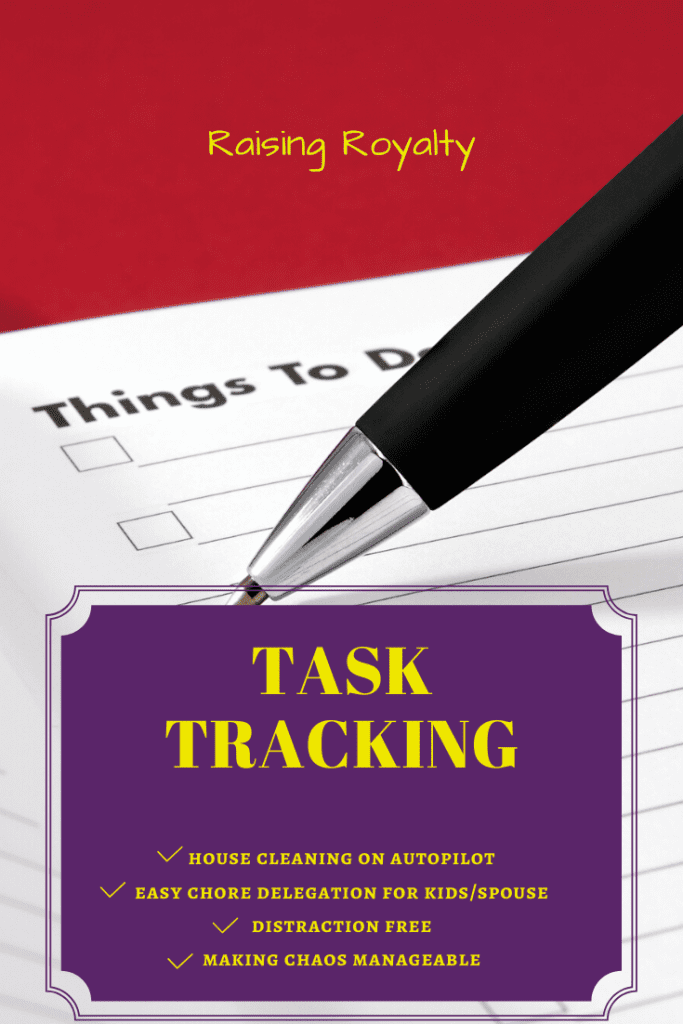Not a task I enjoy
The task of keeping up with my home has always challenged me. This may surprise some people, and others may just smirk, but I am not a naturally organized person.
My mother despaired of me ever learning time management skills, or even basic housekeeping as a child. Whenever chores were to be done, well.. lets just say I disappeared.
But I’m a single parent of 6 children. I had 4 children in 5 years. Organization was forced on me, simply as a matter of survival. I never claim to have it down pat, but I’m better than I used to be.
And I’m desperate to catch up on something that I missed out on somehow. I collect and avidly read old organization books, blogs, magazines.. anything that might help!
Task survival
I found this old book in a yard sale several years ago. The last copyright was before I was born, and the cover showed it had been well used. It was a light-blue paperback, with a cartoon comparison on the front cover.
One side showed a woman in curlers and housecoat, with a stack of dirty dishes behind her, the curtain askew, a mess on the floor and a squalling toddler beside a broken plate at her feet, with a defeated look on her face, and a coffee cup in her hand reading “Take a Break”.
The other side showed a neatly dressed woman, hair and makeup done, coordinated outfit, purse in hand, with happy, neatly dressed child at her side, headed out the front door, with a spotless, well-decorated home in the background.

The message was obvious.
Entitled “Sidetracked Home Executives” I bought the book.
I curiously skimmed the first chapter, and laughed out loud! It described me and my tendencies to a ‘T’.
“We wanted to call this chapter ‘The Way We Were,’ but since that’s a famous song, we figured we’d have to get permission from the writer, and we didn’t know his address or even his name. The only way to find out would have been to load all six kids into the station wagon and drive downtown to Leo’s Taco & Record Pavilion. (Leo lets you dine to music, and if you buy an album you get two tacos for the price of one.) But we didn’t think we should risk it. Knowing how we are, we would have ended up listening to all our favorite records, stuffing ourselves with tacos, and coming home exhausted, with a bagful of albums, indigestion, and no songwriter’s name and address. There we’d be — sidetracked again, doing the very thing that had caused our problem in the first place.”
Task sidetracked
I sat down immediately, (sidetracked lol!) and began to read. I was captivated by the story of two mothers, with 6 kids between them, overwhelmed by the idea of actually having a meal cooked, a clean home, children with clean clothes, washed faces and being able to invite friends over without embarrassment.
The system they proposed seemed simple enough.
Use index cards to keep track of what all needs to be done, and when it needs to be done, and put it in a kind of calendar that can be reused over and over again. I have tried digital and paper checklists, reminders of all kinds, but the ease of use Ms Young and Ms Jones’ system promised was definitely appealing.
I gathered the necessary supplies: index card dividers (actually I didn’t have those, so I improvised using post-it notes and index cards, a box to hold them in, some paper, and several packages of index cards, both white and colored.
Task Steps:
The first step was to make a list of every single task you wanted to accomplish. Everything. They thoughtfully provided a worksheet in the book, but given that this book was rather old, I ended up writing out my list on a notepad.
It took me a couple of days to actually write out everything — from sweeping the floor in the kitchen, to washing curtains, to sweeping down cobwebs or cleaning the toilet, everything went on my list.
My only exceptions were taking out the trash and doing the dishes, because I seemed to have a handle on those. My sink was full of dirty dishes simply because I disliked the chore (hate it!!) and avoided it, not because I didn’t remember to do it.
Then I was to determine 3 things for each item: frequency, time it took to actually do it, and whether or not I was the one who had to do it, or could a child do this?
Given the time period of the book, they rarely mentioned having a husband do anything. That worked for me, as I was (and am) a single parent.

Color coded
The frequency of each task determined what color card it went on. Daily tasks were supposed to be on yellow cards, weekly or every other week were blue, and seasonal, monthly and yearly were on white cards.
Each card was supposed to have the task to be done, the approximate time it should take to do it, and the instructions for doing each task on the card. The last was so that you could delegate: hand the card to someone else, and they could follow the instructions and complete the chore.
I was also supposed to note whether a card was “mini”, that is, whether or not it could be done in 5 minutes or less.
Task Set Up:
To set up the box was easy. The dividers were labeled with each month of the year, and then others with a number, from 1-31. The months went at the back of the box, in order. The numbers went in front of them. Then you put the current month in the very front of the box.
So if it was January the 3rd, your month card would be January, and the first number card behind it would be number 3, with 1 and 2 being behind the number 31 card.
Every day you checked your cards, and at the end of the day, moved that number to the last of the number cards. It became a kind of rotating, perpetual calendar.
Once all the cards were written up (and this was a lot of work! I’m not kidding!), I sorted them into the box. My daily cards were in the first day I distributed the weekly cards among the first week. I scattered the monthly cards over the course of the month.
Task To Do:
The first day, I looked at my daily cards. I looked at my kids. I gave each one a cloth, and a different area to wipe up after breakfast. Amazingly, the first 6 tasks were done in 5 minutes! My kitchen, normally a disaster area that took me half the morning to clean after the kids were done eating, was presentable in mere minutes.
I was amazed. All that work.. and this actually worked!!
Then my oldest and I split up the few weekly chores I had scheduled for that day. Within about an hour, all my household tasks were completed.
I had to sit down, not because I was tired, but for shock.
I now could actually do school with my kids with hours to spare before lunch. That first day was calm, productive, and dare I say.. relaxing.

Task Rescheduled
Obviously things did not always go so smoothly. But I found it extremely easy to “bump” chores over from one day to the next.
Impromptu park day? No problem.. redistribute the weekly cards over the next week. Appointment I forgot? (I was getting better at that too!) No worries — move those monthly cards to next week, or even next month.
After all, it had waited this long, it could wait a few more weeks.
The beauty of the system was the assurance that I wouldn’t just forget something even if I did put it off. It was on a card. It would rotate back through, and eventually it would get done! This was a huge load off my mind.
Long Term Task Completion
We tried it for a few months, and gradually, my house actually became cleaner. The baseboards, once never touched, were washed on a regular, if infrequent, basis. The windows got a spray and wipe occasionally.
My toilet gleamed, my shower shined, and my bookshelves no longer had an inch of dust on them.
The kids no longer wrote messages in the dust on top of the TV!
I could actually enjoy my home.
Our school life improved too. Given that we had a non-sticky table, I felt more comfortable doing crafts with them. Best of all, the surprise visit by my ex in laws didn’t throw me into a complete tizzy anymore.
Task Time
When I tracked the approximate time it takes to do things, I changed my thinking about how I do things. I found I seriously overestimate how long it actually takes to accomplish anything. In writing down time estimates for various tasks, I paid more attention to how long it took me.
I have since rewritten some of those time estimates!
A lot of my problem in my lack of organization was thinking of everything as this huge enormous monster of a job. I wouldn’t even start because I didn’t think I had the time for it. (If this is you, check out my cleaning hacks!)
Now, I realize that it’s not “cleaning the bathroom”. It’s just “wipe the counter” and “sweep the floor”. These are individual tasks, that can be done separately.
(This may be heresy, but there is no law saying you have to scrub your shower and your toilet on the same day. Did you know that??)
The tasks that once overwhelmed me actually take only a few seconds to do.
5 Second Task
Instead of ignoring the shoes spilled all over the floor, I pick up the worst ones, and casually kick the rest in the direction of the closet. I know that in a day or so, the chore will come up on my calendar, and one of my children will be directed to put them all away neatly.
I’ll pick up those few pieces of torn paper off the stairs. I know that in a day or so, the card saying “vacuum the stairs” will come up, and I’ll do the rest then.
I don’t start one job and get sidetracked into another anymore… because my jobs aren’t as big, and they don’t take as long as I once thought. I’ve even been known to have clean sinks occasionally — because I can do a load of dishes in steps, and each step takes only about 5 minutes!
Even the most hated task can be tolerated for 5 minutes.
No more mom-guilt, and my procrastination habits are harnessed. This sidetracked home executive is no longer (as) sidetracked.
** PS: I’ve since learned that this book, and these authors, are somehow related to the FLYlady system. FLYlady has always seemed too advanced for me. How can you have a shiny sink when you can’t even get to the bottom of the dishes!? This system, however, was simple for me.





Pingback: The tools I use to juggle work and parenting - XeraSupport
This is such an excellent idea to keep up with all of the household tasks. When everyone helps out it makes such a big difference in keeping the place tidy!
And it’s really easy to get everyone to help out! When you can just hand out cards, there’s no excuses or forgetting about what they were told. Thanks for reading!
I grew up reading this book — my mom had it! Reading about organizing and cleaning has always been more fun than doing either for me. 🙂 I think I remember Flylady was attempting to automate (into emails) the SHE system…
Maybe that’s why FLYlady never really worked for me? I need the hands on part to remember what to do, and that I need to actually check.
I’ve never heard of this book but FLYLady never worked for me. I instantly felt overwhelmed with all the things and when I didn’t get it done what was the point? I am pinning this to RE-read so i don’t have sidetracked 😛 Thank you!!
It’s a super old book from the 60s but I still have it! And when we fall off on doing chores regularly, it’s so easy to reset. Just shuffle the cards around 🙂
Makes chores easy!
I think even I could employ this method
It’s super easy to keep track of!
FlyLady was a follower of Pam and Peggy of S.H.E. then adapted it for her own and built a following.
Sarah, I loved your post! I read Pam and Peggy back when the books were in first printing. They revolutionized things for me in an era when nobody was really teaching women HOW to manage their homes. Since then, I’ve raised/help raise 50 kids (foster parents and mom of 8) and have a few items that have helped me. I’d love to send you a copy of something but I don’t see a contact form for you. Let me know if you’d like more info (it’s not a sales pitch for an MLM — it really is a gift of one of my books LOL).